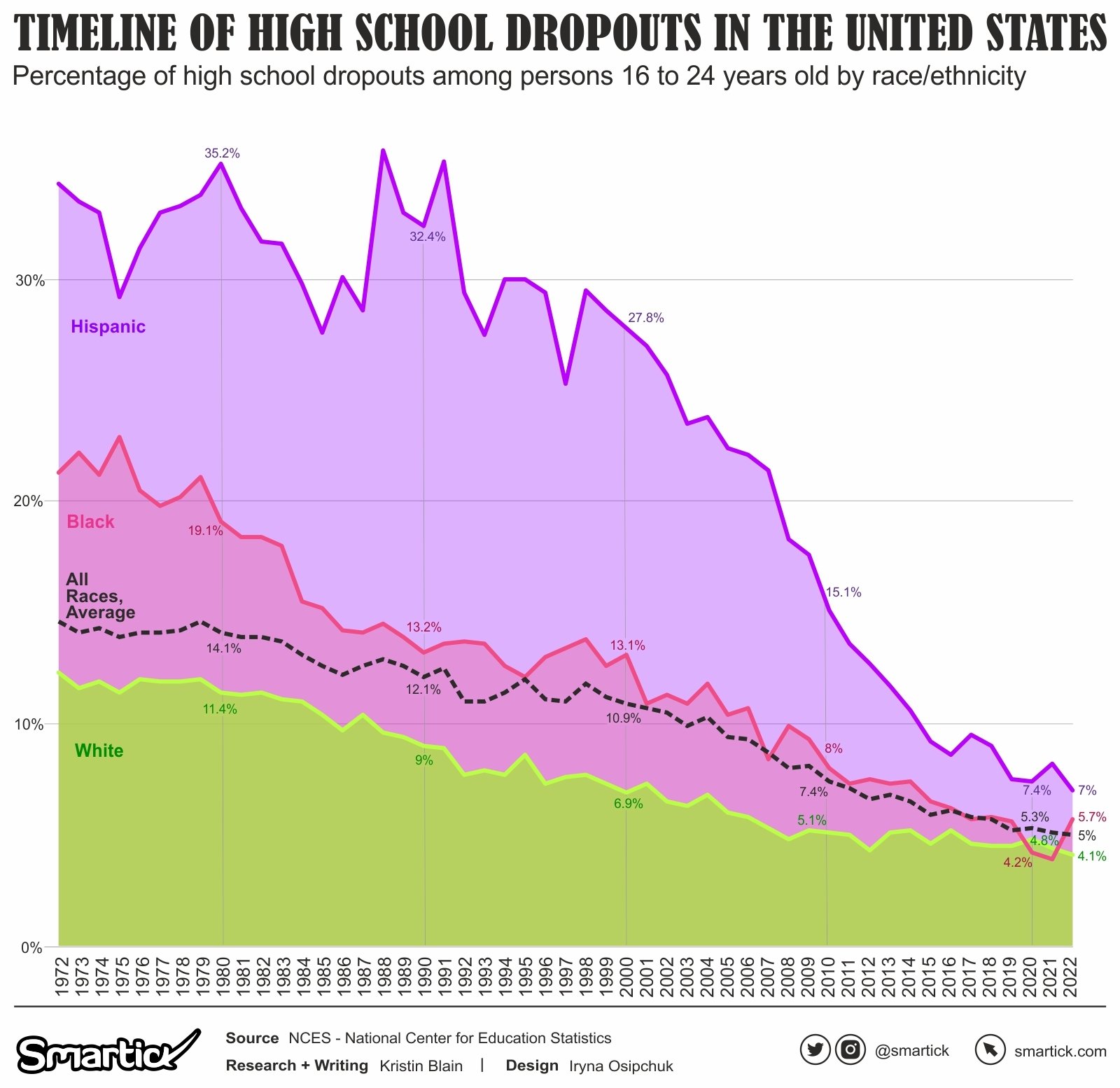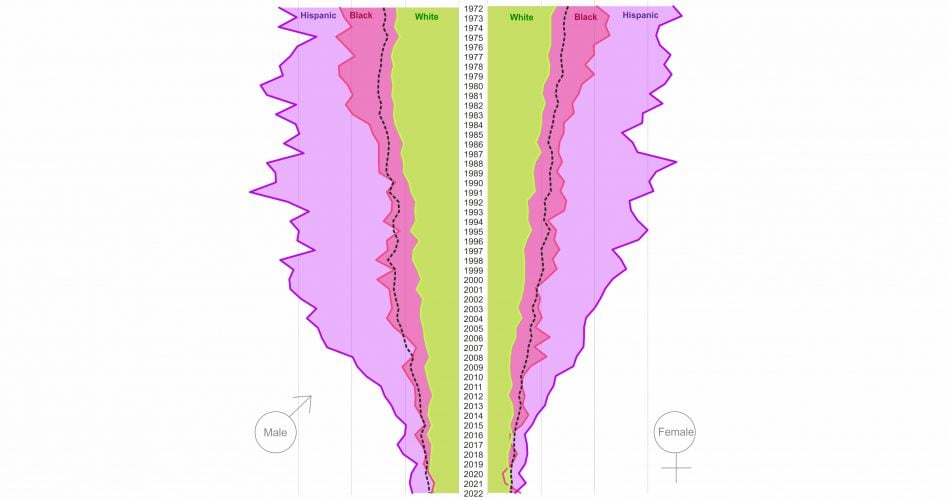
High school dropout rates in the United States represent a critical challenge with profound consequences for individuals, communities, and the nation’s overall development. This article delves into the intricate data surrounding high school dropout rates, primarily sourced from the National Center for Education Statistics (NCES), to unravel the complexities of this challenge within the context of the United States.

Overall Dropout Rates: Unveiling the National Landscape
Understanding the dynamics of high school dropout rates in the United States provides crucial insights into the state of education and its impact on diverse communities. Analyzing the comprehensive data compiled by the NCES sheds light on the overall trends and disparities over the years.
Highlights:
- Trend of Improvement: The status dropout rate has seen a commendable decline from 14.6% in 1972 to 5.1% in 2022, showcasing positive strides in addressing this pervasive issue.
- Decade of Progress: Noteworthy progress is evident as we compare the rates from 2010 to 2019, witnessing a substantial drop from 8.3% to 5.1%. This positive trend is indicative of effective interventions.
- Varied Racial Landscape: Dissecting the data by race reveals disparities, with Asian students reporting a dropout rate of 5%, White students at 4.1%, Black students at 5.6%, Hispanic students at 7.7%, Pacific Islander students at 8.0%, and American Indian/Alaska Native students at 9.6% in 2022.
- Persisting Challenge: Despite progress, over 2 million students aged 16 to 24 continue to grapple with incomplete high school education, emphasizing the ongoing challenge.
- Key to National Development: Recognizing the crucial role education plays in national development, addressing school dropouts becomes imperative for fostering a skilled and empowered workforce.
Dropout Rates by Race and Gender
Delving into the intricate layers of dropout rates by considering both race and gender provides a nuanced understanding of the challenges different demographic groups face within the educational landscape.

Highlights:
- Intersectionality Dynamics: The intersection of race and gender unveils varied experiences, emphasizing the need for tailored interventions to address the unique challenges faced by different demographic groups.
- Gender Disparities: Notable gender disparities are evident, with male students consistently reporting higher dropout rates across all racial groups. For instance, in 2022, Black males had a dropout rate of 6.2%, while Black females had a rate of 5.0%. Hispanic males reported a rate of 8.3%, compared to Hispanic females at 7.2%.
- Persistent Gaps: While overall rates have improved, significant gaps persist, with Hispanic and Black students still facing higher dropout rates than their Asian and White counterparts. In 2022, White students reported a dropout rate of 3.8%, while Hispanic students had a rate of 7.7%.
- Minority Struggles: One in three minority students attend a “dropout factory,” compounding the challenges faced by these communities in securing a complete education.
- Call for Equitable Solutions: The data underscores the importance of developing solutions that not only address overall dropout rates but also target the specific needs of diverse racial and gender groups, ensuring a more equitable educational landscape.
Results: Mapping the Educational Landscape
Nearly half of American citizens have a high school level of education, but the demand for skilled workers in the rapidly evolving job market necessitates higher educational attainment (Irwin et al., 2021). Despite progress, the United States contends with one of the highest high school dropout rates globally. Approximately 2 million students annually fail to complete high school, with disparities evident among racial and gender groups. Hispanic and African American students, in particular, face lower graduation rates than their Asian and White counterparts.
Impact of High School Dropout
The repercussions of high school dropout extend beyond individual lives to impact communities and the nation at large. Each dropout represents a substantial economic burden, with estimates suggesting a cost of $272,000 to the U.S. economy for every high school dropout. Moreover, high school dropouts are more likely to live in poverty, engage in criminal activities, and rely on welfare systems. The socioeconomic disadvantages faced by dropouts contribute to the perpetuation of the school-prison pipeline, further straining societal resources.
Causal Factors of School Dropout
Understanding the multifaceted factors contributing to high school dropout rates is essential for developing effective interventions. Accessible curricula, poverty, disasters, unfriendly school environments, inadequate infrastructure, and economic hardships are among the numerous risk factors. Moreover, personal conditions such as disabilities and insecurities, including bullying and criminal incidents, contribute to the complex web of reasons students opt out of high school.
Conclusion: Charting the Path Forward
As we navigate the intricate tapestry of high school dropout rates, it is imperative to recognize the diversity of challenges faced by students across racial and gender lines. Equitable solutions must be devised to address the unique needs of each demographic group, ensuring an inclusive and accessible education system. By tackling the root causes of high school dropout and implementing targeted interventions, we can pave the way for a more prosperous and equitable future for all students. The journey toward reducing dropout rates is a collective effort that requires collaboration between educators, policymakers, and communities to create a learning environment that empowers every student to succeed.

